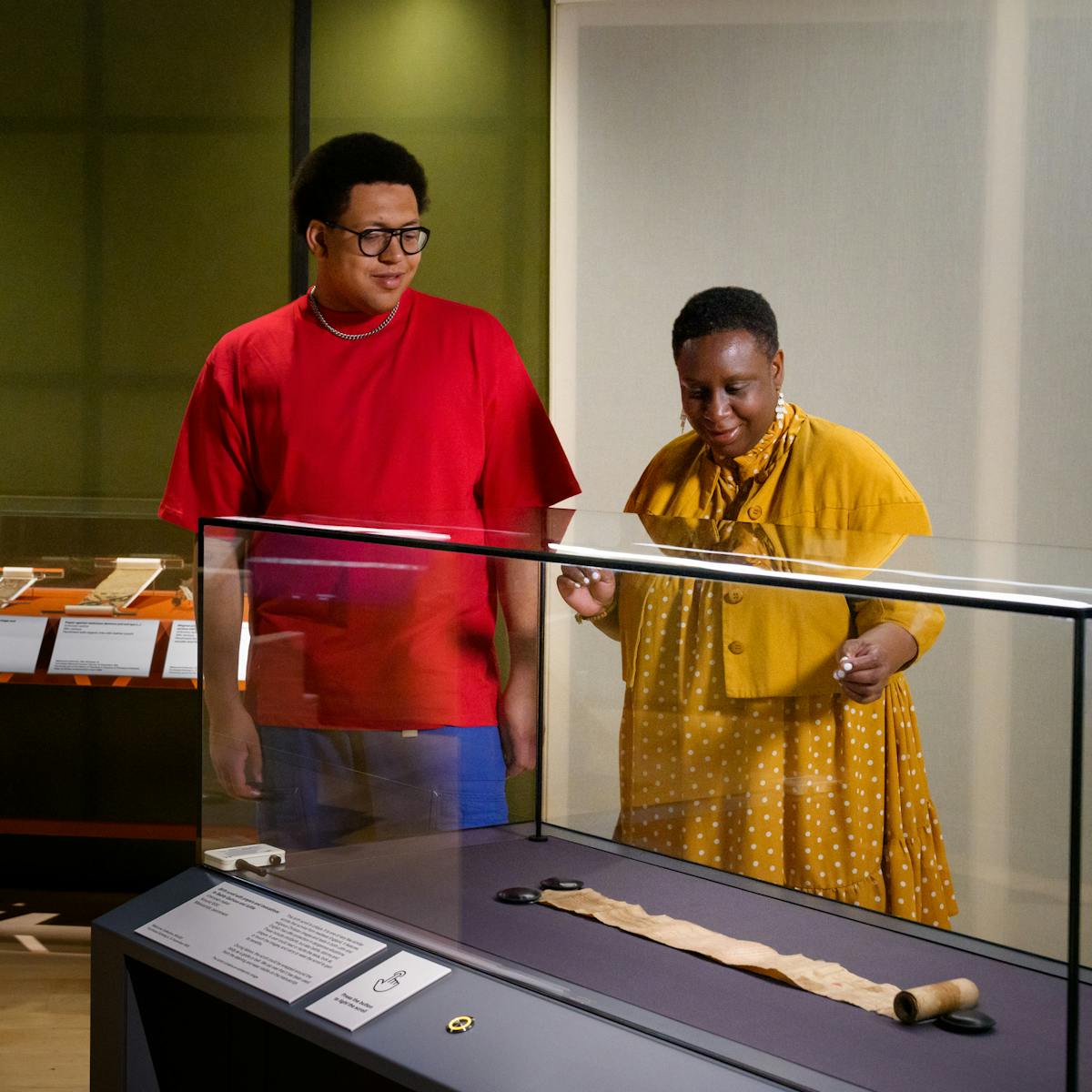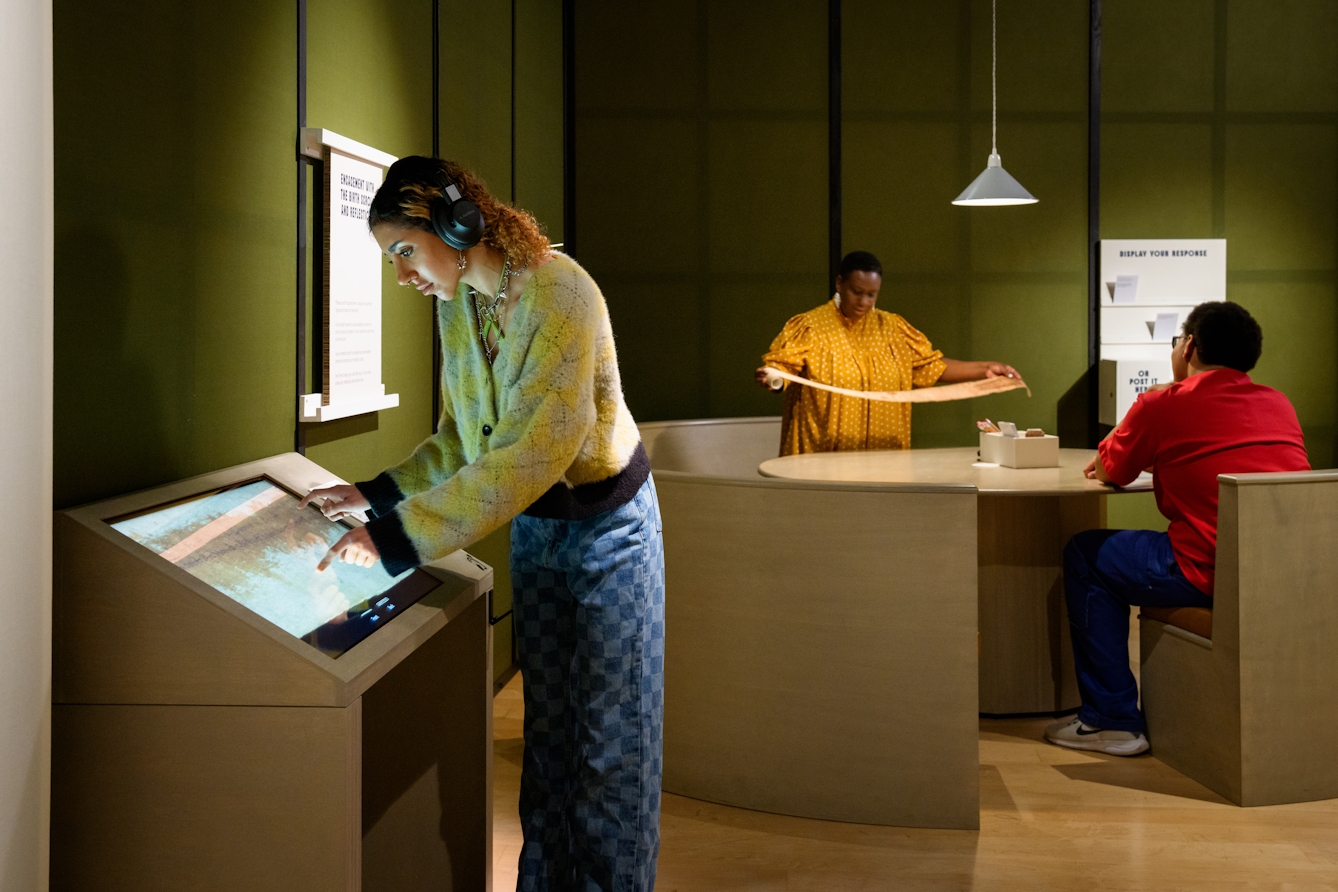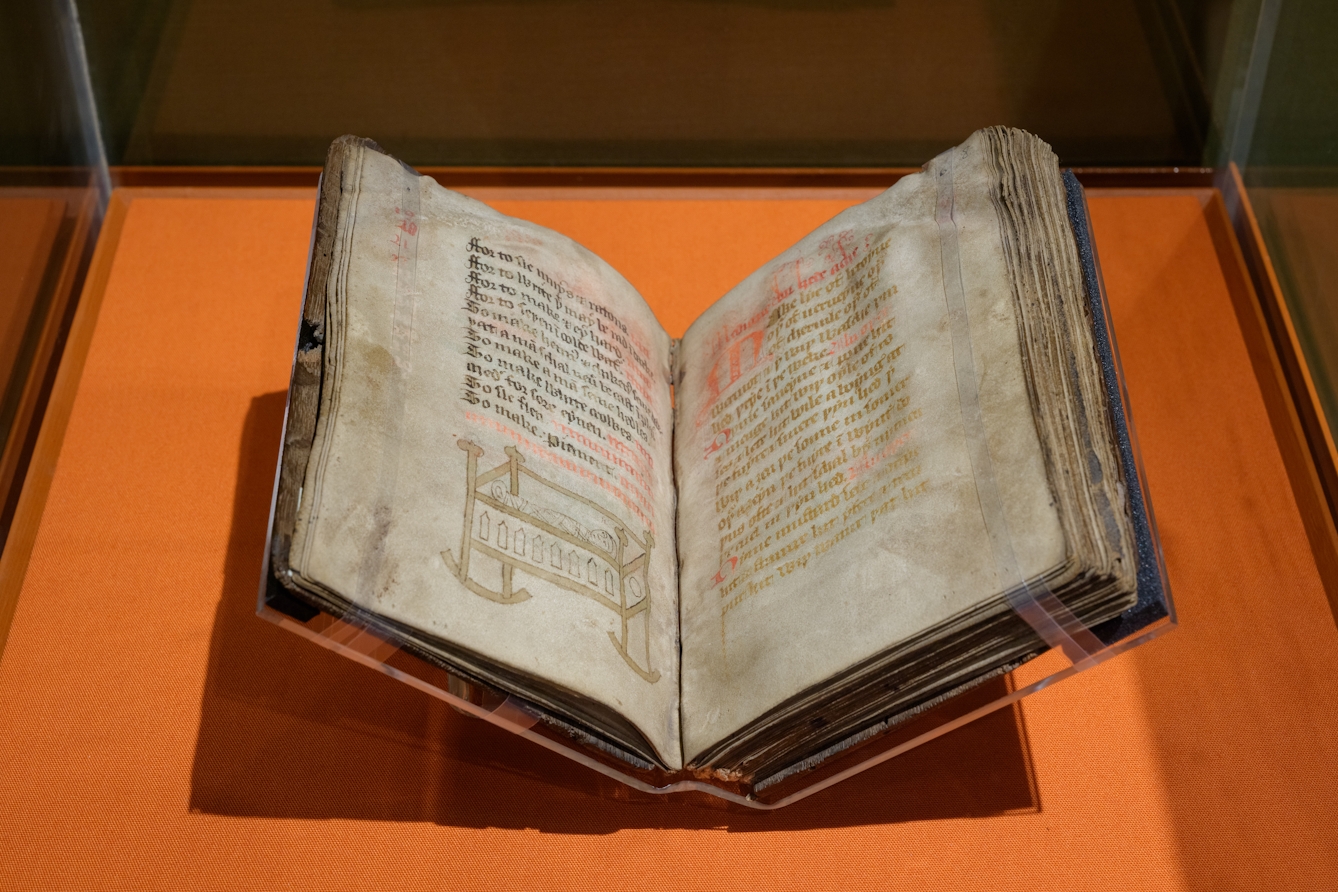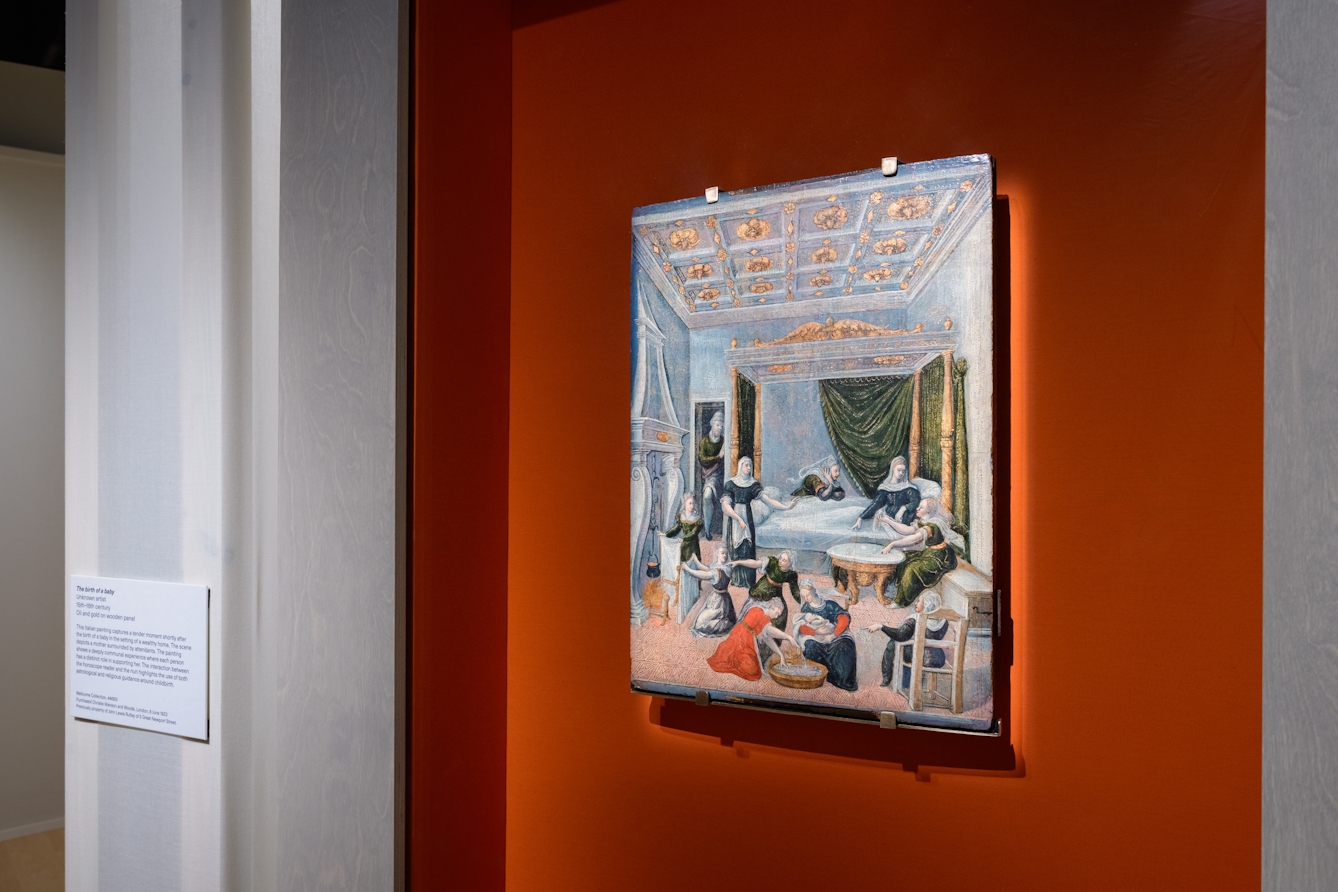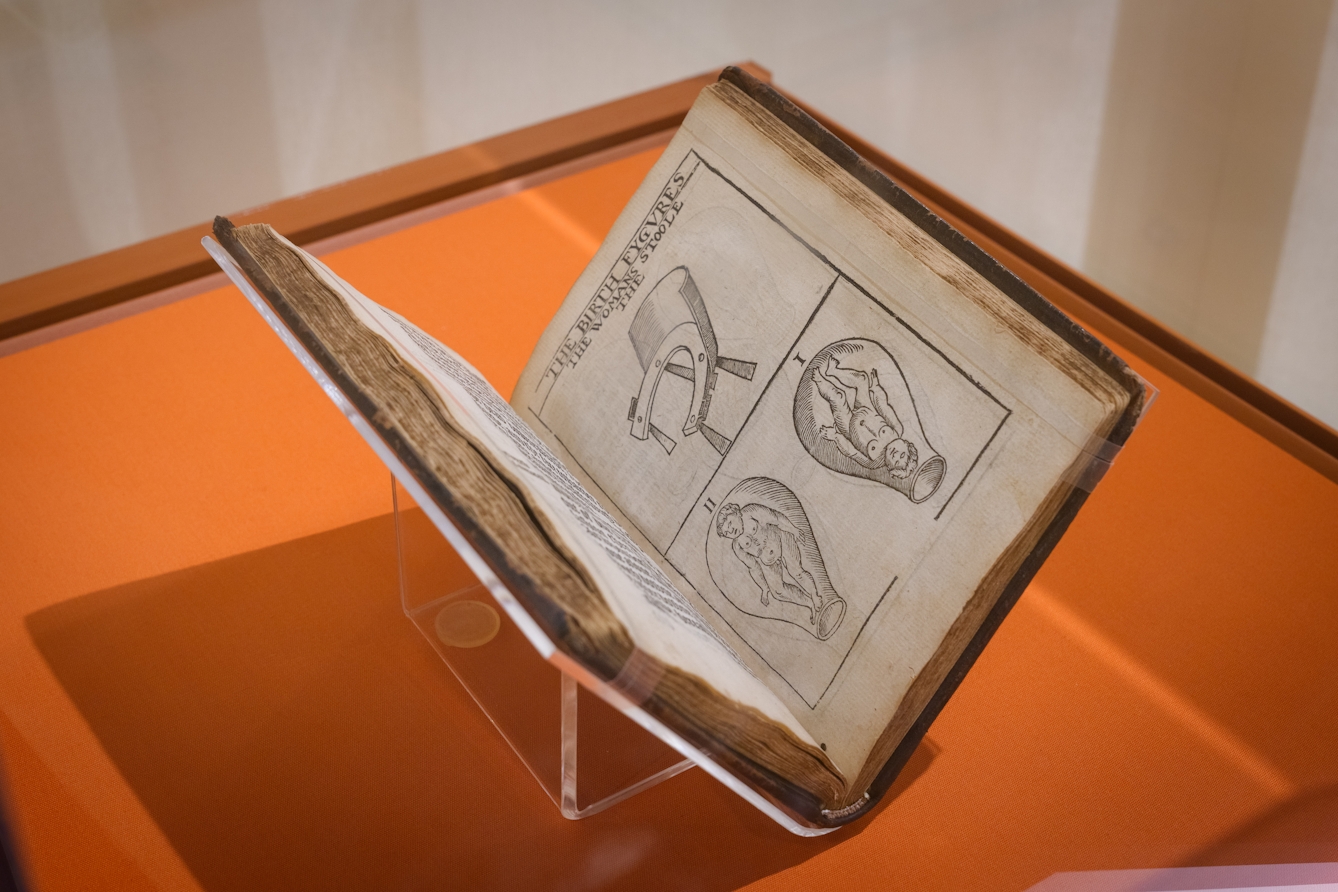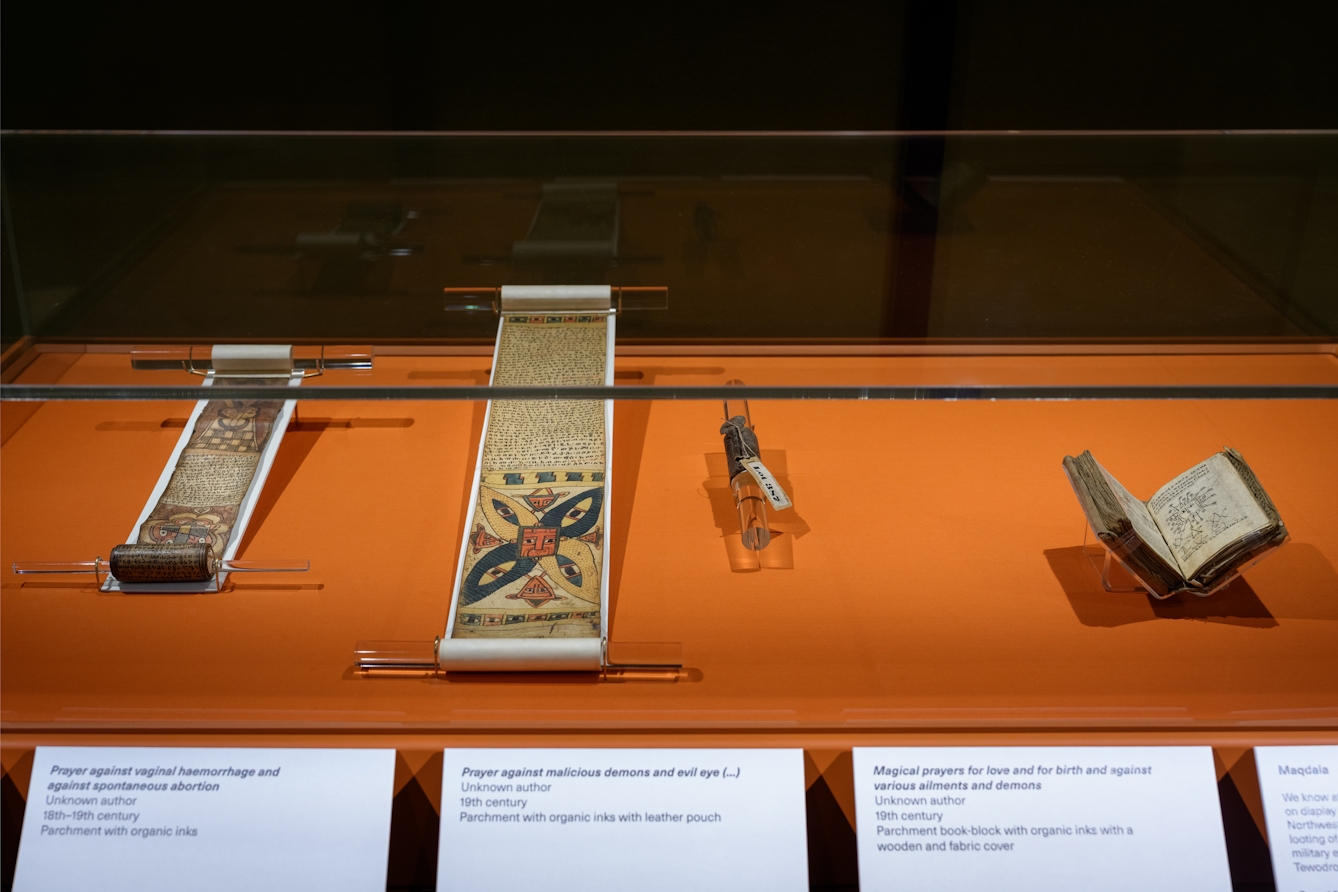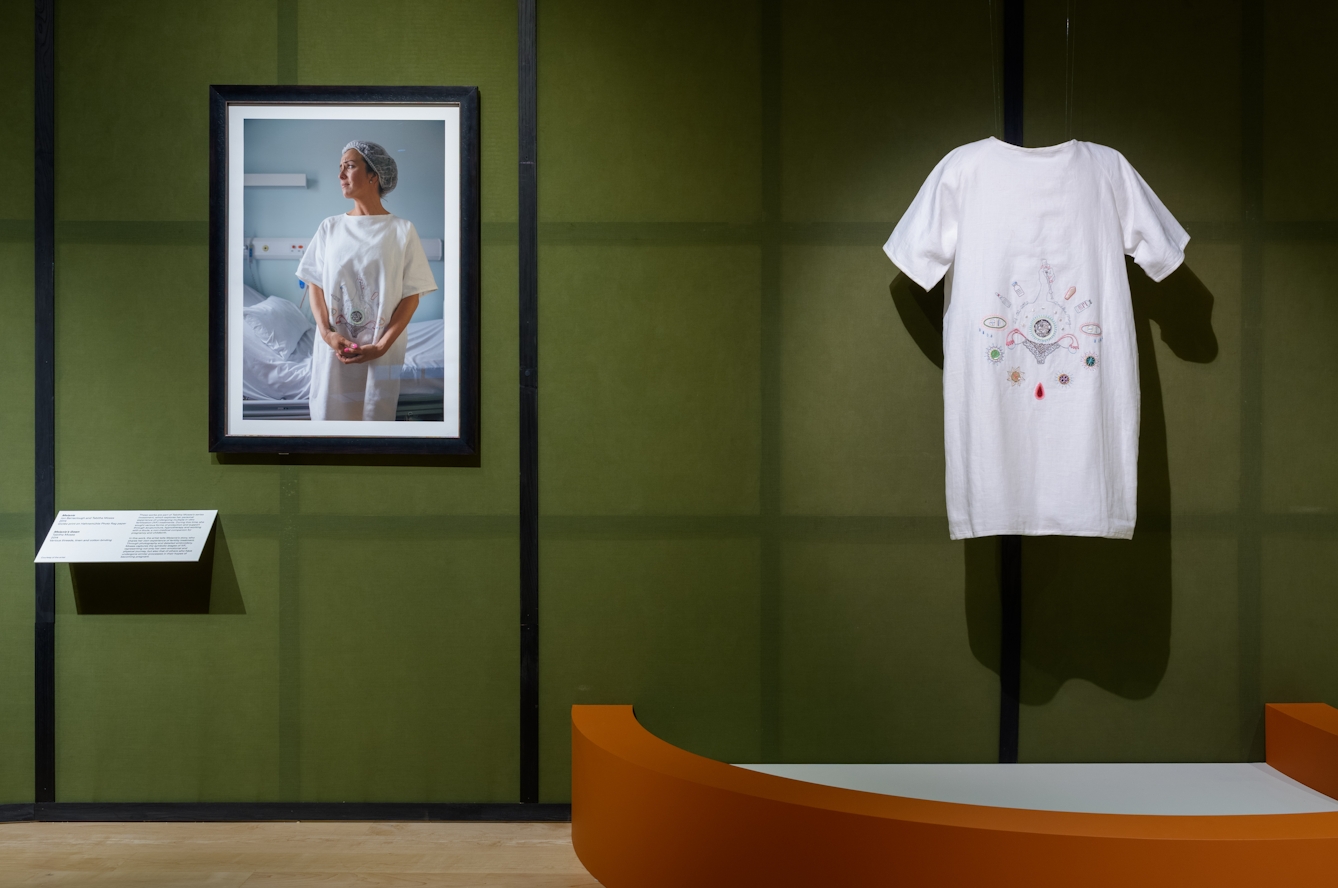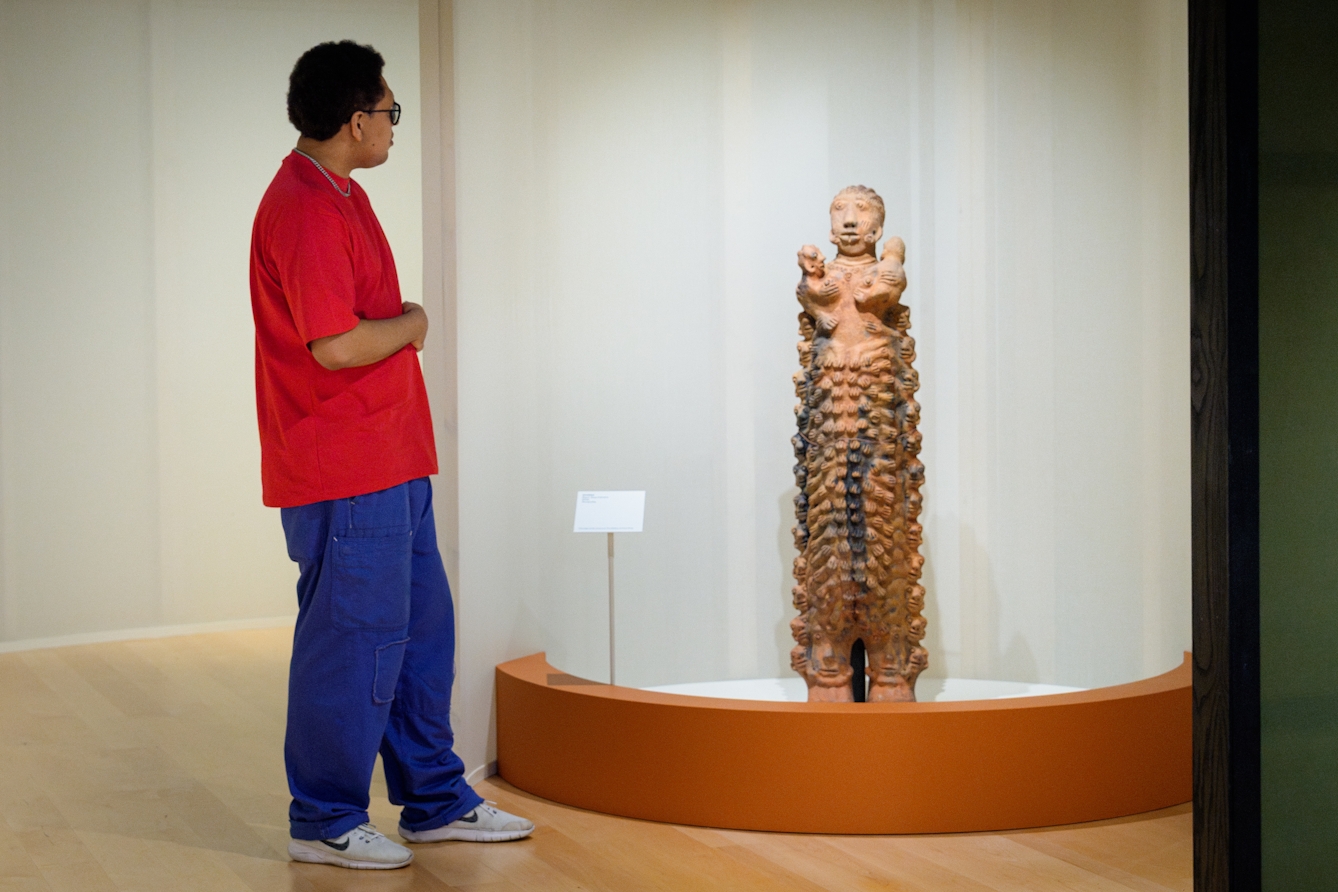‘Expecting: Birth, Belief and Protection’ is a new display that explores the protective practices and beliefs around pregnancy, childbirth and infertility that existed in medieval times and continue through to today. The medieval period in Europe lasted from about 500 to 1500 CE.
At the heart of the display is a parchment scroll (MS.632(view in catalogue)) produced in England around 1500 CE. Christian prayers and religious illustrations cover the parchment’s entire 3-metre length, which could be wrapped around the body for protection during childbirth and at other moments of danger.
Only a handful of birth scrolls survive today, and the display is a rare opportunity to see this fragile object from our collections. In some parts of the scroll, the writing and illustrations have worn away through bodily contact, and other areas are stained. A video in the display features an interview with Dr Sarah Fiddyment, the protein scientist who analysed the scroll and confirmed that it was actively used during childbirth.
'Expecting' focuses on non-medical strategies to manage fear and pain, and to foster hope and resilience in childbirth and loss. Prayers offered before or during pregnancy and labour were, and still are, part of many cultural and spiritual traditions.
Alongside the medieval scroll are other historical works from our collections, including three 18th-19th century Ethiopian manuscripts that feature blessings for love, fertility and pregnancy.
We know that at least one of the Ethiopian manuscripts in the display was taken from Maqdala by the British Forces in 1868. Wellcome Historical Medical Museum acquired them at auction in London between 1915 and 1924. Wellcome Collection is committed to further discussions around the future of these manuscripts as part of our work to examine the roots of our collections.
Together, the historical manuscripts and contemporary works speak to enduring traditions of care and belief in the protective power of sacred images, words and art.
This display has low light levels. The gallery door will remain closed to maintain environmental conditions. Please ask gallery staff if you need assistance.
This display includes references to childbirth, fertility and fertility treatments, reproduction, child loss, medical trauma, grief, death, faith and spirituality.
